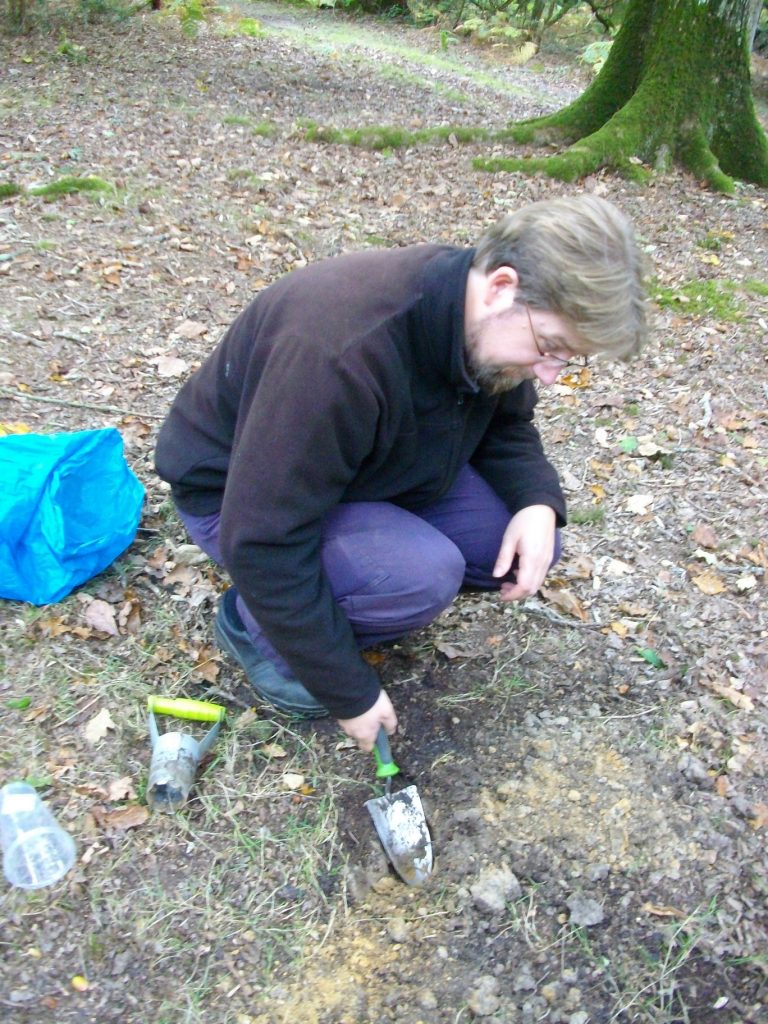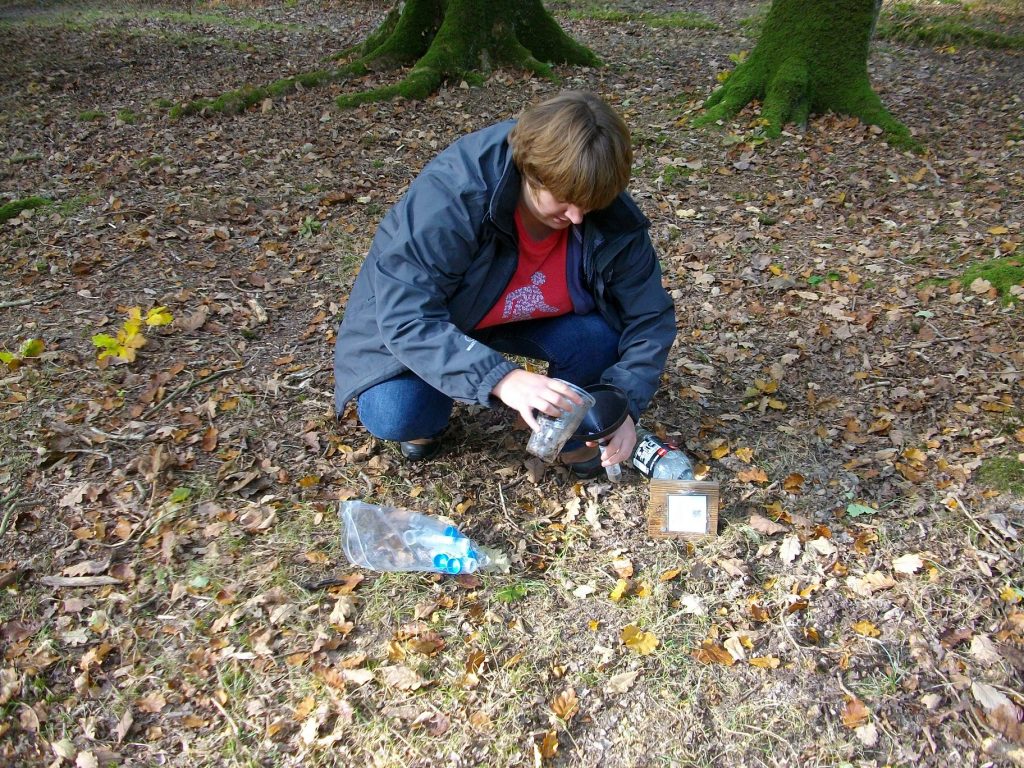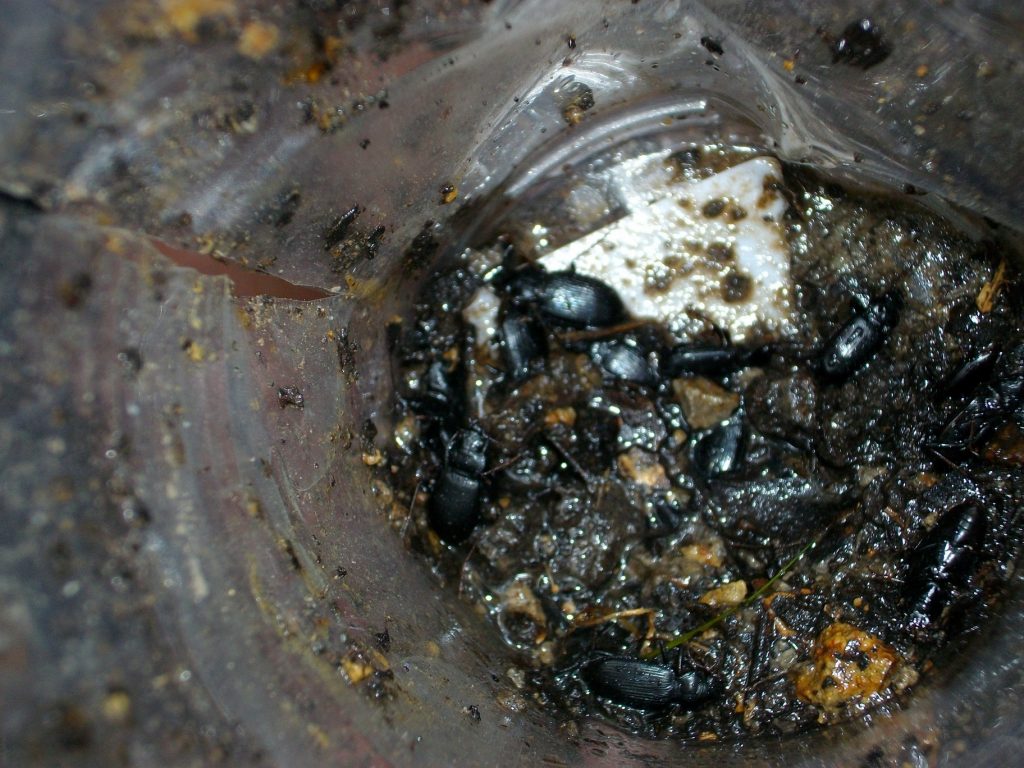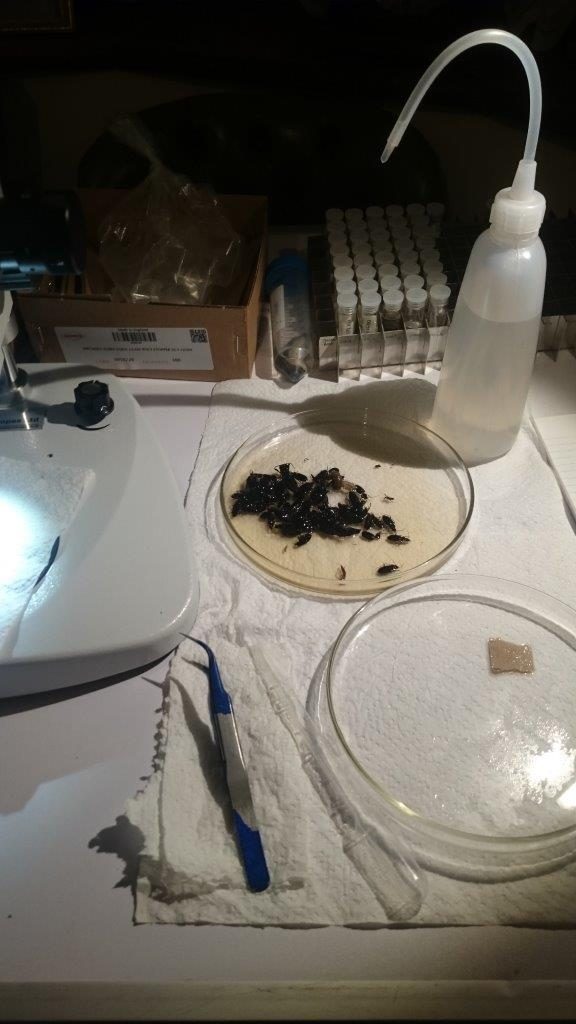For the last couple of months I have been doing fieldwork in the New Forest – a National Park in my home county of Hampshire. The New Forest was previously sampled by the Natural History Museum Soil Biodiversity Group during the New Forest Qualitative Inventory in 2010 and I have been revisiting some of the sites and also new ones. The aim of my sampling is to collect soil and leaf litter invertebrates, and soil cores for microbial analysis in six different land uses which correspond to those used in the PREDICTS project: mature secondary vegetation, immature secondary vegetation (heathland), plantation forest, grassland, cropland and urban areas.
Many of the methods I am using are the same as I used in my MSc project, I dig a hole to collect earthworms and other soil animals, and sieve leaf litter which are placed in Winkler bags to extract invertebrates living in the leaves. I have also being doing pitfall trapping, which is the first time I have done it as part of a research project rather than casual recording of beetles. I really dislike pitfall trapping!
What a pitfall trap?
A pitfall trap is one of the simplest forms of collecting invertebrates for ecological surveys, it is simply a cup set into the ground so that the rim is at ground level. As the invertebrates run across the surface they fall in and are trapped. Usually the cup is filled with liquid which kills and preserves the animals until the trap is collected, although you can run them dry if they are checked often to prevent the captives eating one another. There are several variations of pitfall traps, including putting bait and using baffles to herd the animals in the trap, but I used the basic type for my research. They are not a very representative way of collecting invertebrates as they only catch things that run around on the surface – particularly predatory beetles, and I am not entirely happy with them as a way of comparing communities. However, they are commonly used for ecological surveys and I don’t think I could have got away without doing them, and I am not using them as a method alone. Eminent entomologist Prof Simon Leather discusses pitfall traps in much more detail than this on his blog – which I highly recommend.

The New Forest is famous for its free roaming livestock, especially the New Forest ponies, but also cattle, donkeys and, in the autumn, pigs. It is also open to the public and popular with tourists, walkers, dog-walkers etc. so I ensured I used non-toxic preservative and covered the pitfall traps with a lid raised of the ground to try and prevent animals drinking from them. The lids also had my contact details and information on the project to avoid them being interfered with my well-meaning passers by. Unfortunately ponies do not read so I did loose three to being trampled and thrown about by ponies! So that is irritation number one.

The pitfall traps were left and collected after a week, this was irritation number 2 as it meant coming back to the sites the next week, it was also sometimes challenging to find them even with GPS co-ordinates! One we never managed to find as the co-ordinates had not been recorded correctly. After all that work, here is what you get:

This was a particularly nasty one with lots of specimens and not much preservative, some of the others were not as bad. The worse invertebrate to find in your pitfall trap are slugs, they go horribly bloated and get slime all over the other specimens, but thankfully I did not have too many cases of those. The specimens are then rinsed off and preserved in alcohol until its time to identify them – that’s for another post!





2 comments for “The pitfalls of pitfall traps”